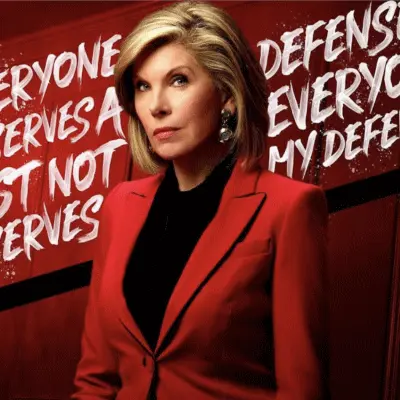The Good Fight's Season 5 finale is revolutionary with its real-world parallels
-

"Like many other shows stuck in production limbo last spring, The Good Fight didn’t end last season quite the way it intended. The show certainly left on a memorable note, but to describe the details for the uninitiated is to spoil one of the great reveals in recent history," says Steve Greene. "If anything, navigating the void left by three unfinished episodes made series co-creators Robert and Michelle King more determined than ever to tell a full, complete arc in Season 5. And for a show that often draws its thematic material directly from the prevailing stories on a national scale, this latest finale made one the show’s clearest connections to the very real events that kicked off this calendar year."
ALSO:
- With Season 5, there’s a tipping point when it comes to suspension of disbelief: "There’s an alchemy to The Good Fight’s madness," says Kayla Kumari Upadhyaya. "Its surreal and super-charged approach to legal drama is unlike any other legal drama on television. It’s bold. It doesn’t just take big swings. It subs out the baseball bat in favor of a sledgehammer. And if I’m sticking to this wacky metaphor, the baseball is probably a big, juicy orange. What I’m trying to say is it’s slapstick-melodrama, and that’s a nearly impossible combination. And yet, The Good Fight makes it possible...sometimes. Other times, the alchemy is off. And that’s how much of the hack half of season five has felt—disjointed and lopsided. Too cartoonish at times. Too self-serious at others. The Good Fight so often seems like a circus trick. But it’s hard to pull off trick after trick after trick.....There’s a tipping point when it comes to suspension of disbelief. I’m willing to meet the show on its own playing field. But The Good Fight has somehow outdone itself in terms of its surrealist storytelling. The Wackner experiment has spiraled down a tortuous rabbit hole—which of course was the intention all along. But a make-believe trial debating secession? Diane Lockhart held in a make-believe prison in a woman’s basement? We get it; power corrupts. The justice system is full of injustices. Courts are circus shows. Yet The Good Fight doesn’t ground that message in its character development or storytelling, reducing its narrative to a stunt that isn’t as clever as it strives to be. The finale acknowledges that certain power imbalances exist—take, for example, the cops storming Vinetta Clark’s court and being violent with all the Black characters but then letting Kurt and Diane just walk out. But the finale shirks going deeper on any of those power imbalances. It just sort of points at them then looks away."
- Robert and Michelle King on The Good Fight Season 5's darkness: "I think the bottom line is that this year is about January 6, and where it's headed," says Robert King. "But I do think the more pessimistic the show is, the more it has a smile on its face. You know, there's the sweetness that comes from some of the shows now, Ted Lasso and things like that. But you've got to try to at least look at the way things are going wrong with eyes open, you know? There seems to be this breaking up of justice, the idea that justice means one thing in one state and one other thing in another. So the more we our country becomes bifurcated, the more worrisome I think it all is. But we're not pessimistic people! I mean, I don't think we are."
- The Kings talk Diane and Kurt: "I think Diane loves Kurt as much as I do," says Michelle King. "Gary Cole is so wonderful. Their relationship is, in some ways, aspirational; regardless of their disagreements they still support each other. Maybe it’s a weak(ness) on my part, but I’m just not quite ready to let that (relationship) go."
TOPICS: The Good Fight, Paramount+, Michelle King, Robert King
